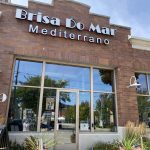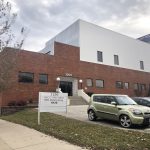Bridging the gap in 53208
A small but effective nonprofit is providing tutoring and support to students in one of Milwaukee’s most troubled neighborhoods.
The organization is Our Next Generation (ONG), and 97 percent of students who participate in its programs graduate from high school.
“This is a community – 53208 – with the highest crime and highest drug-use rate in Milwaukee,” said Bob Dunn, ONG executive director. “There isn’t a kid in our program who hasn’t seen someone shot.”
ONG’s operating budget, which comes from privately raised dollars, is $600,000. It employs six full-time and 15 part-time employees and has around 300 volunteers.
Dunn has been with ONG for eight years. During that time, he seen many initiatives come and go but no lasting change for 53208 and beyond.
“I look at our central city,” he said. “And there have been decades of programs and money put in and it continues to suffer. I have to find inspiration more from a micro perspective. You see kids with amazing talents that are camouflaged by the community they’re in. You see a different level of hope.
“I believe the community will change, not because of Our Next Generation. I think each child who’s successful, their children will be raised differently. That’s my hope.”
Started in 1992, ONG sprang from the Homework Club, a volunteer-based program started by an informal group of men who wanted to bridge the achievement gap in Milwaukee. The after-school program for elementary school-aged students remains as one of ONG’s programs.
Since then, ONG started additional programs for middle- and high-school aged students that help keep students connected to positive forces in their lives so they can turn from the pressures of the street.
“We see families that are very violent who do a lot of damage to their children,” said Dunn, who said children they serve live in poverty, many of whom are homeless and abused. “We are asking kids early on to overcome obstacles.”
ONG’s programming focuses on a core curriculum – literacy and math – and provides one-on-one tutoring and mentoring, said Dunn. But the program’s main focus is on developing relationships with the children so they can make better life choices down the line.
Dunn can’t help but make comparisons to the Milwaukee Public School system as he struggles to find ways to close the city’s achievement gap.
“I can’t say we’re superior to the school system,” he said. “We’re different.”
“We try not to replicate what goes on in the school,” said Dunn, acknowledging that MPS’ size and scope is much broader than ONG’s. “All of the underlying issues that represent depressed communities – the violence, the poverty, the abuse – all of those impact education.”
More and more, Dunn said, ONG’s programs have incorporated art in all its forms – making music, writing poetry, painting, creating a community project — to reach the students.
“Over the years, we began to use art more and more. At first, it was an activity. Then we found that art could be used as a tool to connect with their feelings and get those feelings out in a nonviolent way.”
Art is incorporated into an after-school literacy program, Kidz Lit. Dunn said 75 percent of ONG students are reading below grade level. The Kidz Lit curriculum sidesteps some of the issues children have with reading by having them engage in an art activity that piques their interest before introducing a story.
“Our goal was to bring reading alive,” he said. “They participate at a different level.”
ONG’s High School Connection also aims to keep students connected to each other and the staff and volunteers at ONG, and keep them in school.
“The underlying belief is if we keep kids connected, with positive peers, with positive volunteers and staff, kids have the wherewithal to succeed.”
The message is important, he said, as only 31 percent of children in the neighborhood surrounding ONG are expected to graduate from high school. According to the state Department of Public Instruction, for all Milwaukee Public Schools, that rate is 33.2 percent.
“This community doesn’t even meet the dismal district rate,” he said.
It’s the one-on-one attention and interventions that make a difference, Dunn said.
“We take them to visit (college) campuses. We take them to meet people in different professions.”
ONG provides tools for students to succeed, but ultimately, the message is one of self-reliance.
“We tell them, ‘If you want to fail, you can come up with a long list of reasons to fail. But if you want to succeed, there are people here who will help you succeed,” said Dunn. “Our kids are graduating and staying in school and finding success not because they’re the exception, the cream of the crop. We hold kids accountable as a family would hold them accountable.”





















[…] Our Next Generation: Bridging the gap in 53208 | ThirdCoast Digest Share/Bookmark ← Results Can A Rehab Edmonton placement Give You superior … […]
[…] ThirdCoast Digest […]